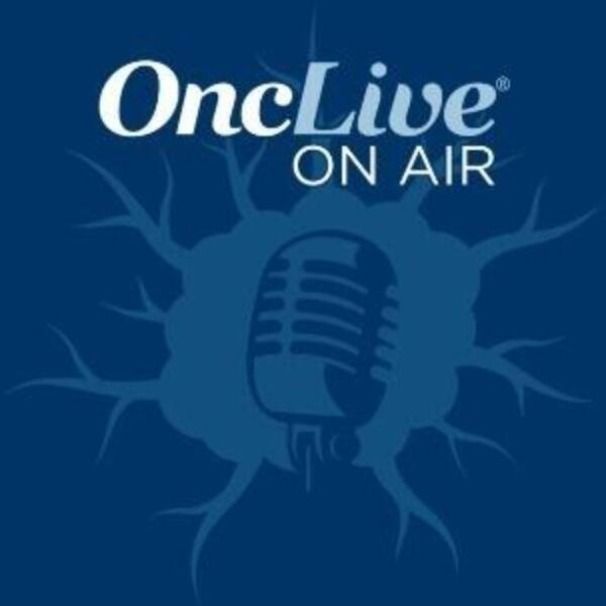Article
Improving CAR T-Cell Therapies With Greater Understanding of Cancer Immunology
Author(s):
Eduardo Sotomayor, MD, discusses the evolution of CAR T-cell therapy, adverse events that require careful monitoring, and novel strategies under development that may mitigate toxicity and improve T-cell persistence.
Eduardo Sotomayor, MD, professor of medicine, Department of Hematology and Oncology, and director, GW Cancer Center

Eduardo Sotomayor, MD
The two FDA approved CD19-directed CAR T-cell constructs—axicabtagene ciloleucel (axi-cel; Yescarta) and tisagenlecleucel (Kymriah)—have revolutionized the field of oncology, and provided a foundation to create additional constructs to overcome resistance mechanisms and minimize treatment-related toxicity, said Eduardo Sotomayor, MD.
“What we’re doing now is just the tip of the iceberg in cancer immunology,” said Sotomayor. “I feel encouraged that patients with advanced disease and those with relapsed/refractory disease are living longer. It's rewarding to see the proof-of-concept that the immune system [can eradicate cancer].”
In an interview during the 2019  OncLive  State of the Science Summit on Hematologic Malignancies, Sotomayor,  professor of medicine, Department of Hematology and Oncology, and director, GW Cancer Center, discussed the evolution of CAR T-cell therapy, adverse events (AEs) that require careful monitoring, and novel strategies under development that may mitigate toxicity and improve T-cell persistence.
OncLive: Could you discuss the development of CAR T-cell therapy in hematologic cancers?
Sotomayor: Many years ago, [CAR T-cell therapy] looked like science fiction. However, investigators discovered that this technology was feasible.
Several clinical trials have since been performed in patients with B-cell malignancies that express CD19. We have CAR T cells that target CD19-expressing B-cell malignancies, such as pediatric and adult acute lymphoblastic leukemia (ALL), B-cell non-Hodgkin lymphoma (NHL), and chronic lymphocytic leukemia. There are results of important clinical trials and data that led to the approvals of axi-cel and tisagenlecleucel in patients with ALL and B-cell NHL. 
Why was CD19 chosen as a target?
CD19 is expressed on B cells in B-cell malignancies. It was chosen because antibodies against CD19 exist. CAR T cells are the results of the advances that we, as a scientific group, made in the field of monoclonal antibodies—the first example being rituximab (Rituxan), which is an CD20-directed monoclonal antibody. Then, came HER2/neu for breast cancer, where we also have CD19; CD19 is expressed in malignant cells and normal cells.
Due to the availability of those antibodies, researchers wanted to find a way to introduce the specificity of these CD19 antibodies into T cells, so that the T cell could recognize the target. Several groups designed constructs and were able to introduce these retroviruses into T cells. These T cells expand, proliferate, and then express the artificial CAR receptor against CD19. That was just the beginning. Now we can create CAR T cells against CD20, CD22, and CD30. [Essentially, we can create CAR T cells] against any target that is expressed on the surface of the tumor cells. 
Are there any differences between axi-cel and tisagenlecleucel?
They differ in the costimulatory molecule that they have. All these platforms have a portion that recognizes the target—in this case, CD19. They also have a costimulatory signal, either CD28 or 4-1BB. Then, they have a signaling pathway. The T cells have to engage the target, and there needs to be a signal inside the T cells for them to activate, proliferate, recognize, and kill the tumor cells. Based on clinical trials, we now know that those constructs that depend on CD28 are more potent but have a shorter half-life. In contrast, 4-1BB constructs are less potent, but persist longer.
These platforms are being modified so that, in the case of CD28 costimulation, they’ll last longer without decreasing potency. In the case of 4-1BB, [we’re working to make them] more potent. The results of the clinical trials that have been done are extremely important, because they’re going to allow us to improve the efficiency of these platforms. Different groups are trying to make these responses more targeted. If we can modulate the production of inflammatory cytokines without sacrificing efficacy, we could minimize the AEs associated with these platforms.
Could you expand on the toxicities that are associated with CAR T-cell therapy? How can these events be managed?
Patients need to be treated in centers that have experience in delivering these types of therapies, specifically ones that are familiar with giving cell therapies and bone marrow transplant. In those centers, a patient will need a group of experts in addition to the hematologist/oncologist or cell therapy specialist.
They’re also going to need a group of experts in infectious disease and neurology. Some patients will require admission to the intensive care unit (ICU), so the ICU needs to be aware of the AEs that are associated with these therapies. Moreover, the emergency room needs to know that the patient has been treated with CAR T cells and be aware of the AEs as well. These patients can, without proper management, decompensate very rapidly.
The most common toxicities that we see with these therapies are cytokine release syndrome (CRS) and CAR-related encephalopathy syndrome. We have a better understanding of CRS. [It develops] because we are activating T cells. Once T cells are activated, they kill the tumor cells and raise a lot of inflammatory cytokines, including interleukin 6. Now we have a treatment for that; we can use steroids to minimize these events. CAR T cells are smart, but they are not smart enough to differentiate tumor cells from normal cells, so they are going to encounter the target and respond; that will lead to a significant production of cytokines.
In terms of grade, most of the AEs we're seeing are grade ≤3. However, some patients can develop grade 4 AEs, and there have been cases of death. Regarding neurotoxicity, several hypotheses have been postulated to be associated with the encephalopathy that we see. There is still more work that needs to be done in order to fully understand why patients develop these neurologic AEs.
Now, there are guidelines on how to manage these patients. For instance, if there is a risk of seizure, some patients are going to be placed on prophylactic antiseizure medications. We know that patients who have a high tumor burden are likely to develop CRS; therefore, these patients are going to be monitored very closely. Their blood pressure will be measured more often than patients who are receiving other types of treatments. Several guidelines need to be followed by physicians, as well as nursing staff and auxiliary services. 
What is the durability of these products?
We're seeing that CAR T cells can persist for months or even years. As a normal immune response, they're going to generate memory cells. In some patients, if the disease tries to come back but still expresses the target, the memory cells will expand and control the disease so that the patient can continue in a clinical remission. Sometimes the tumor cells are smart and [will recur without CD19], which is a mechanism of escape. That mechanism of escape is going to lead to proliferation and subsequent relapse.
However, if CD19 is not expressed, those cells will still express CD20 or CD22. Therefore, now ongoing clinical trials are trying to rescue those patients with CAR T cells against a different antigen. Also, instead of waiting for a patient to relapse, strategies are evaluating a combination of two different CAR T cells, either CD19 and CD20 or CD19 and CD22. In that way, we can try to prevent resistance.
Is it possible to create more than one dual-targeted CAR T cell?
In theory, yes. These constructs are like Lego blocks. There are scientists that can create what you are describing. You could introduce a gene that is going to allow the CAR construct to recognize CD19, CD20, and CD22. Even more, you could introduce a cytokine that, once secreted, would allow the T cells to survive longer, such as interleukin-15 or interleukin-7.
It is also possible to create CAR T cells that not only express the receptor, but also produce an antibody such as PD-1 or CTLA-4 inhibitors. We need to wait for properly designed clinical trials to see whether this is going to be more effective [than what we already have]. We also need to worry about safety. Everything is possible these days in terms of genetically engineering CAR T cells.
What studies are you excited to see the results of?
At Memorial Sloan Kettering Cancer Center, studies are trying to modulate the responses to CAR T cells. Researchers designed CAR T cells so that they are downregulated as soon as the CAR T cell is engaged, which may limit AEs. Other CAR T cells are being constructed so that the intensity of the signaling can be [controlled]. There are other groups looking at natural killer (NK) cells. Can we modify NK cells? The answer is, “Yes.” The technology is available to modify any type of immune cell. 
How do you see CAR T cells evolving over the next decade?
If the immune system is capable of eradicating cancer, the big question for me is whether our immune systems are capable of preventing cancer from developing in the future. We need to be nice to our immune systems. We have to eat healthy and exercise, do all the things that are going to make our immune system stronger. Perhaps then, if patients do develop cancer, we’ll just need to push the immune system a little bit further to finish the job. 







